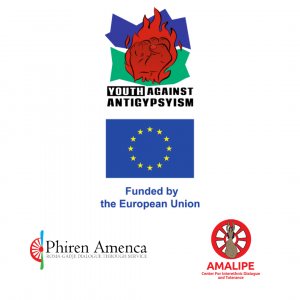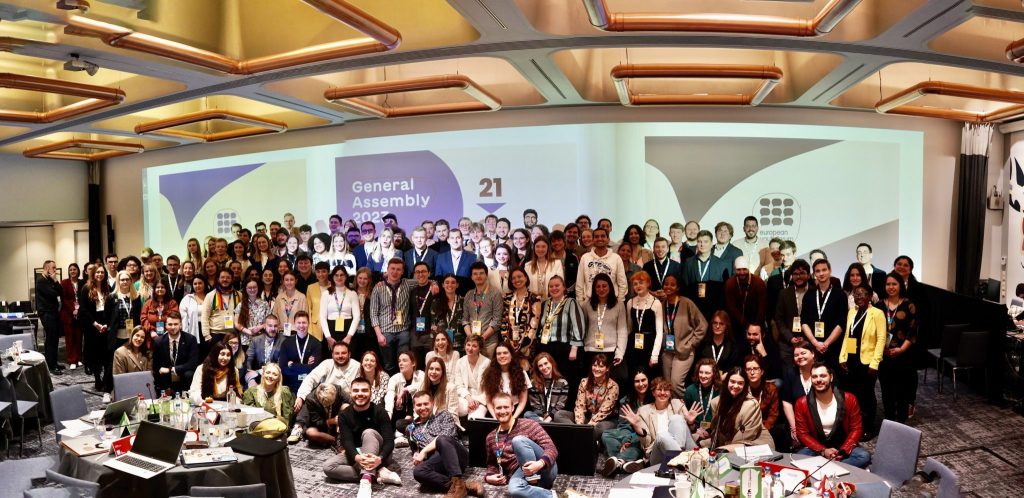In line with the 2020-2023 European Youth Forum (YFJ) Strategic Plan, which includes priorities such as the inclusion and diversity of marginalised and vulnerable communities, and in line with the 2020 YFJ Resolution on combating antigypsyism and the inclusion and equal participation of Roma youth, the YJF resolves to address participation of young Roma i.e., to ensure and support that Roma youth is addressed in both European and national mainstream youth policies, and that the equal participation of Roma youth organisations is strengthened. YFJ member Phiren Amenca and its partners embarked on a research project titled “Youth Against Antigypsyism – Roma youth participation in mainstream youth structures” which aims to uncover the key barriers Roma youth organizations face when it comes to their participation in mainstream youth structures (i.e., national youth councils, IYNGOs), but also some of the efforts and good practices on enhancing Roma youth representation across Europe.
This research aims to uncover the key barriers Roma youth organizations face when it comes to their participation in mainstream youth structures (i.e., national youth councils), but also some of the efforts and good practices on enhancing Roma youth representation across Europe. The full research will be published very soon, so keep updated! Until then, here you can read some of the preliminary findings.
Research context:
Youth structures such as youth councils, youth organisations, youth clubs, student unions, etc. are considered key partners to be consulted on issues related to youth policies by European and national authorities and have the legitimate authority to formulate opinions and recommendations on youth issues. Recent EU initiatives on youth such as the Youth Guarantee have left out Roma youth as key beneficiaries or target groups. This has shown the importance of having Roma youth representatives in key consultation mechanisms as a way to ensure the needs of Roma youth are addressed and acknowledged.
Roma youth participation is a very important pillar of both youth and Roma policy. If young Roma people are involved in decisions affecting them, then they will feel a sense of ownership regarding these decisions, and the services created for them can correspond better to their aspirations, needs and rights. The limited mainstream youth politics and policies in general, have failed to address the voice, presences, needs and concerns of Roma youth.
Research objectives:
This research aimed to
- explore how Roma youth participation in structures of representation and decision-making processes can be strengthened and guaranteed by relevant stakeholders at the national and European levels
- uncover the key barriers Roma youth organizations face when it comes to their participation in mainstream youth structures (i.e., national youth councils, IYNGOs)
- present some of the efforts and good practices on enhancing Roma youth representation across Europe
Research subjects:
- The research targeted European Youth Forum members: 11 national youth councils took part in our survey and interviews, and 6 international youth non-governmental organizations responded to our survey, supplemented by the views and input received from 9 Roma and Roma youth organizations.
Key findings:
- Roma youth are excluded from National Youth Councils and international youth non-governmental organizations, and do not have access to networks and structures of representation.
- Mainstream youth institutions do not target Roma youth specifically in their work, and policies and policymakers have yet to address systematically and continuously the needs of Roma youth in Europe.
- Only 7 of the surveyed National Youth Councils have Roma youth organisations as their members
- Only 4 of the surveyed National Youth Councils have Roma youth as an explicit focus of their work.
- National Youth Councils are lacking proactive measures and intentional goals to include Roma youth substantively.
- Out of the 9 Roma youth organizations surveyed and interviewed, only 1 of them is part of a National Youth Council.
- Only 3 National Youth Councils declared that they have a diversity and inclusion strategy.
- National Youth Councils have employed diverse strategies to be more inclusive towards underrepresented groups. For example, subsidised or no NYC membership fees for those associations that cannot afford to pay it (i.e., Austria, Spain) or recruitment strategies and outreach that focuses specifically on those youth groups that are difficult to reach out.
- Only 2 of international non-governmental youth organisations surveyed have Roma youth members. The findings also show that even those IYNGOs that have a profile that is highly relevant for Roma youth – such as education, political participation, discrimination, etc. – do not have a Roma presence.
- Roma youth representation and presence in these youth power structures need to be enhanced in order for policy-makers to be introduced to specific Roma youth initiatives.

This research is implemented within the YAG project. The YAG project (Project No. 101049207) is funded by the Citizens, Equality, Rights and Values Programme (CERV) of DG Justice, European Commission and coordinated by the Phiren Amenca International Network, Belgium in partnership with RGDTS, Hungary and the Centre for Interethnic Dialogue and Tolerance “Amalipe”, Bulgaria. However, the views and opinions expressed are solely those of the author(s) and do not necessarily reflect those of the European Union . Neither the European Union nor the granting authority can be held responsible for them.


